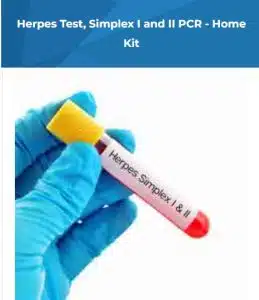
This article will explore the differences. STD test results between men and women and provide practical tips for dealing with this important aspect of sexual health. In addition, Herpes Exams will also be discussed in it.
“We’re seeing a concerning lack of progress in stopping the spread of sexually transmitted infections worldwide,” said Dr Peter Salama, Executive Director for Universal Health Coverage and the Life Course at WHO. “This is a wake-up call for a concerted effort to ensure everyone, everywhere, can access the services they need to prevent and treat these debilitating diseases. And one of the common sexual diseases is herpes, which has been troubling the world for decades.
All bacterial STIs can be treated and cured with widely available medications. However, recent shortages in the global supply of benzathine penicillin have made it more difficult to treat syphilis. However, rapidly increasing antimicrobial resistance to gonorrhoea treatments is also a growing health threat and may eventually lead to the disease being impossible to treat.
Understanding the Importance?
Sexually transmitted infections can have severe consequences if left undetected and untreated. And monitoring for sexual diseases is vital for early diagnosis and timely intervention. Regular screenings can help identify infections before symptoms appear, preventing the transmission to others and reducing the risk of long-term problems.
Kits for Boys:
Men should be proactive about their sexual health by following these steps for effective STD monitoring:
- a) Routine Check-ups: Regular visits to healthcare professionals for comprehensive monitoring are suggested, especially if sexually active or engaging in high-risk behaviours.
- b) Testing Methods: Various methods, including urine, blood, swabs, and physical examinations, detect sexually transmitted diseases in males. The choice of investigation depends on the specific infection being screened for.
- c) Awareness and Communication: Educate yourself about common sexual diseases, their symptoms, and transmission methods. And openly communicate with sexual partners about sexual health and potential risks to encourage responsible behaviour and shared responsibility.
Checks for Girls:
Women can take specific measures to ensure effective monitoring of sexual diseases:
- Regular Gynecological Examinations: Scheduling routine visits with a gynaecologist is essential for women’s overall sexual health. Gynaecologists may screen for sexually transmitted diseases and make tests such as Pap smears and pelvic exams.
- Pap Smears: Pap smears are the most important tests to detect cervical cancer, as the most high-risk HPV types cause it. However, as suggested by healthcare professionals, regular screenings can identify abnormal cell changes early on, allowing for timely intervention.
- Other Monitoring Methods: Similar to men, women may undergo urine, blood, and swab investigations for STD PCR Test Kits, depending on the suspected infections.
Role of Viruses in Maintaining Balance:
Monitoring the HSV infection using a Home exam is one of the most popular methods. It plays a crucial role in maintaining the sexual health of males and females. It helps detect the presence of the simplex virus, allowing for early treatment and prevention of scatter. Regular screenings, conducted through blood or swab samples, are recommended, particularly for those with multiple partners or new sexual relationships. If diagnosed with this infection, appropriate treatments can manage symptoms and reduce the risk of spreading the infection. Screening also encourages open communication with partners, enabling informed decisions about sexual activity. By actively engaging in this screening, men and women can take control of their sexual health, protecting themselves and their partners.
Types of Virus:
Two main types of exams help spot it: blood investigation and swab exams.

Herpes Simplex Test Kit Types
- Blood Investigation: These checkups commonly detect the presence of antibodies in the bloodstream. The body’s immune system produces these antibodies in response to a herpes infection. The two types of blood exams are:
a) IgG: This investigation measures the levels of IgG antibodies, which are more reliable indicators of a past or ongoing HSV test infection. It can determine whether an individual has any past infection.
b) IgM: This checks for antibodies that indicate a recent infection. However, it is less accurate than the IgG exam and may sometimes produce false-positive results.
- Swab Investigation: This investigation collects samples from the affected area, such as a blister or sore. The two types of swab exams are:
a) Viral Culture: It involves swabbing the fluid from the source of the infection and culturing it in a lab. It helps identify the presence of the virus and determine the type (Type-1 or Type-2).
b) Polymerase Chain Reaction (PCR): This detects the virus’s genetic material in the collected sample. It is highly accurate test and can identify the type of herpes virus present.
Both blood and swab kits for herpes have advantages and limitations. Based on individual circumstances and symptoms, it is important to consult with a healthcare professional to determine the most appropriate type of investigation.
Shared Responsibility and Safe Practices for Risks:
Regardless of gender, taking collective responsibility for sexual health is crucial. Follow these vital tips:
a) Consistent Condom Use: Proper and consistent condom use during sexual activity helps reduce the risk of contracting and spreading STDs.
b) Vaccinations: Vaccines are available for certain viruses such as HPV and hepatitis B. Speak to a healthcare professional about the appropriate vaccinations for your situation.
c) Honest Communication: Discussing sexual health, past experiences, and concerns with partners promotes trust, informed decision-making, and responsible behaviour.
Conclusion:
STD Private Tests are critical to maintaining sexual health for both men and women. Monitoring of herpes is crucial for tackling the spread of the HSV virus, which can cause sexually transmitted diseases. However, regular screenings, open communication, and safe practices promote a healthier and safer sexual experience.
